Adaptation: What is it and why do we need it?
9 minute read
Updated on: 30 Apr 2021
In an ideal world we would stop climate change in its tracks – this is called mitigation. Mitigation is any action which helps to reverse or slow climate change either by:
However, climate change is already happening . This means mitigation will simply not be enough
, especially without large-scale national or international climate action
. Therefore, we will need to adapt to the existing
and future effects of climate change
.
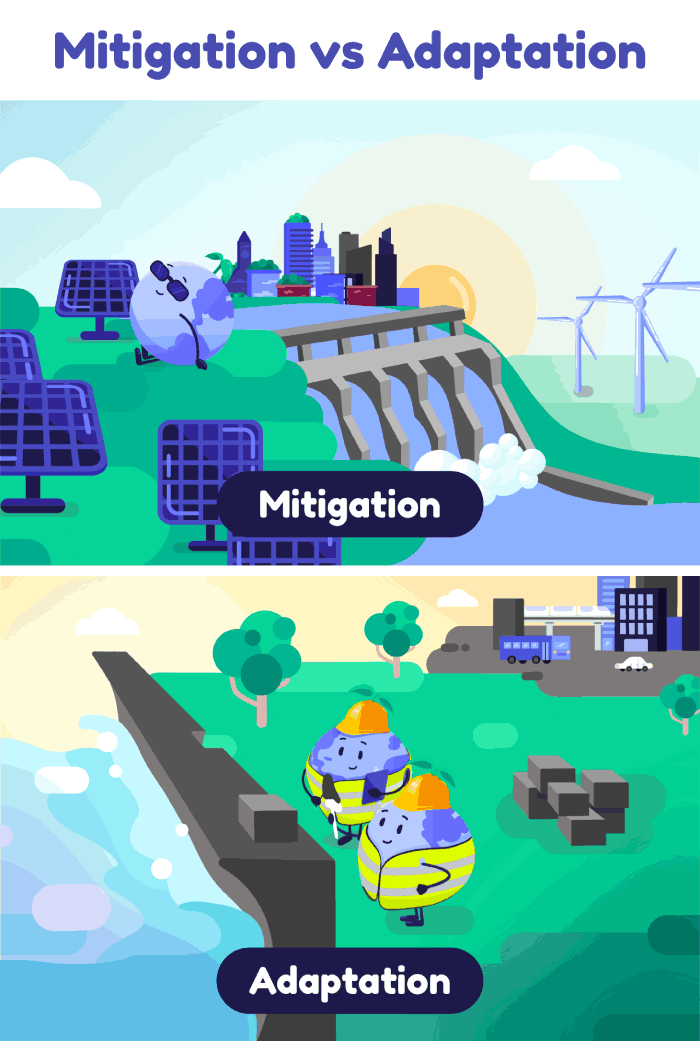
Adaptation and mitigation
Climate change adaptation is any action that allows us to continue to meet our basic needs (food, water, health, shelter) by adjusting to climatic changes . Adaptation can either be planned in advance or work as a reaction to change
, and involves important choices by all sorts of decision-makers, including farmers, business-people, politicians
and individuals
. These choices can help reduce the negative impacts of climate change, or even make the most of its potential benefits
, such as longer growing seasons for certain crops
.
When deciding how to adapt, we need to be careful to avoid maladaptation . This is where the choices we make now end up increasing our risk further down the line
. Installing more air conditioning to cool indoor spaces for example, is not a great solution if this inadvertently increases outdoor heat via higher greenhouse gas emissions
. This is why it is important to assess which options will be sustainable in the long-run.

Maladaptation is any action which makes the problem worse in the long-run
Should we adapt?
You might be thinking that adaption sounds a bit like giving up. Surely we should focus all our efforts on stopping climate change in the first place? Well, adaptation has a couple of important benefits :
- Preventing future losses (e.g. damage to infrastructure, ill health)
- Providing economic opportunities
- Creating wider social and environmental benefits
Basically, adapting in clever ways can provide us with a safety net whilst helping reduce the potential damage predicted by climate models . To explain this, let’s take a closer look at the climate science and its uncertainties. In 2014, models predicted that if we abandoned efforts to mitigate greenhouse gas emissions, the global average surface temperature would increase from 3.7 to 4.8°C by 2100, compared to pre-industrial levels. However, these models did not account for all the variability in the data, and if we add climate uncertainties into the mix then this temperature range increases from 2.5 to 7.8°C
.
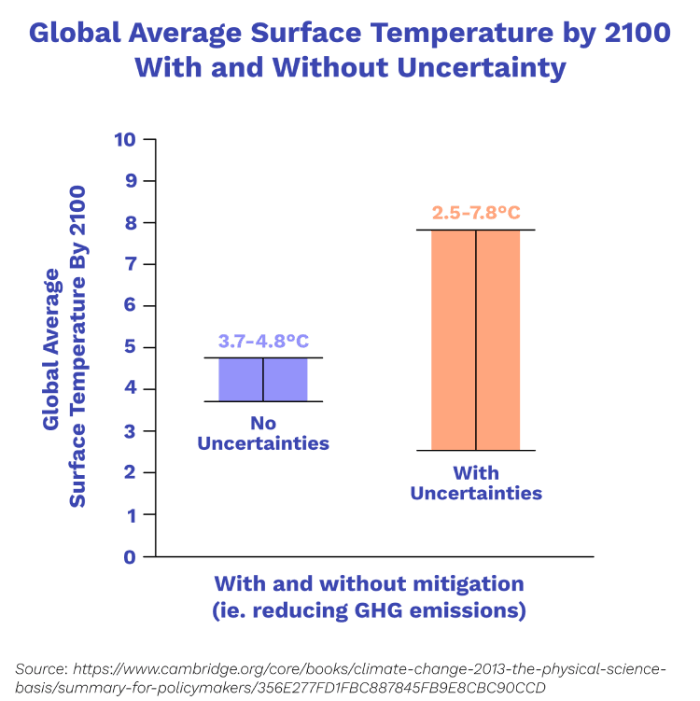
Factoring in uncertainty to our models
In other words, the less we do to mitigate (stop) climate change, the hotter the planet gets and the harder it becomes to adapt . We can also flip this on its head - the more successful we are at adapting to climate change, the lower the potential impacts on our society will be
. Take a look at the blue section in the graph below, it highlights how adaptation could help us cope with a wider range of climatic conditions
.
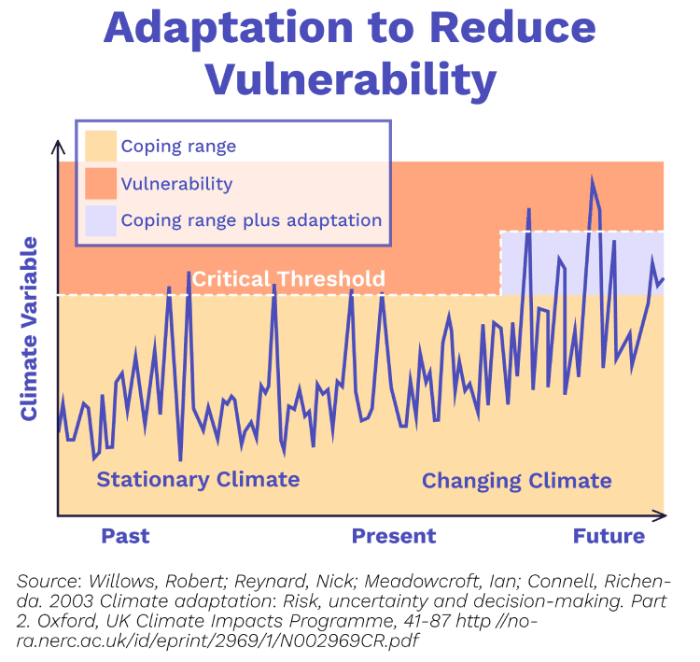
How can adaptation reduce our vulnerability to climate change?
In fact, you may be surprised to learn that many people are already adapting – from small-scale rain gardens that collect stormwater to the relocation of whole communities, like the Isle de Jean Charles in the USA
.
Therefore, the important question is not should we adapt but how do we adapt – what should be the scale and speed of our response ?
Most scientists agree that we need both mitigation and adaptation in the fight against climate change . The tricky part is striking a balance between the two given our limited time and resources
.
If done effectively, however, a balanced approach is likely to be the cheapest option over time. Check out the graph below to see how this might work .
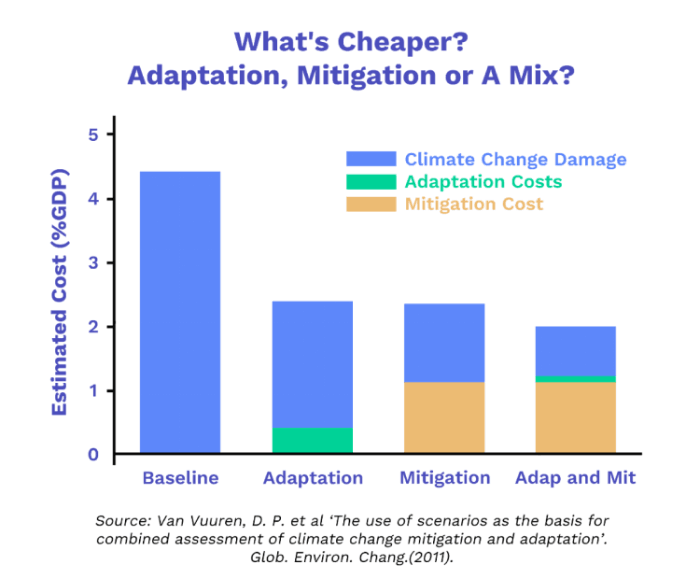
What’s cheaper: Adaptation, mitigation or a mix?
With a bit of planning, we can even pick smart solutions which mix the two approaches. A good example is soil management, where healthy soils can both store carbon (which aids mitigation) and act as a buffer against climate change by preventing landslides and improving soil drainage (i.e. adaptation)
.

Smart solutions tackle both problems at once
When and how should we adapt?
There are a couple of different ways to adapt, so let’s explore some of our options:
- “Reactive adaptation” or “retrofitting” is needed when the effects of climate change are already being felt
. Sea-level rise is a good example of the consequences of climate change which we are already having to adapt to
.
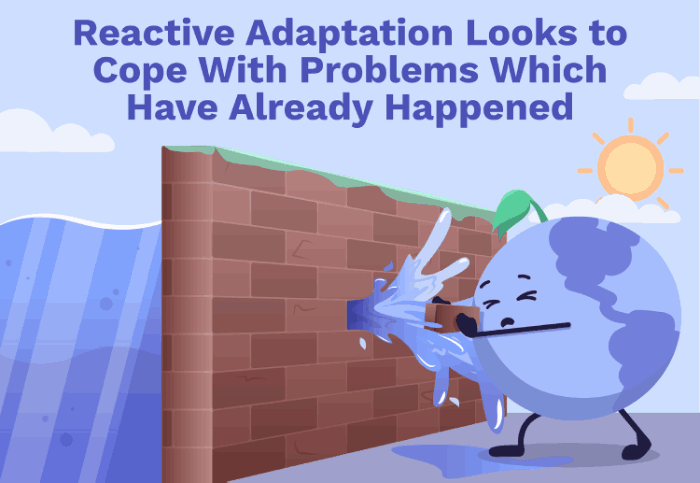
Reactive adaptation
- “Precautionary adaptation” is when we choose to adapt before we feel the consequences of climate change. In some cases, this can be more effective, easier and less costly than doing so at a later date
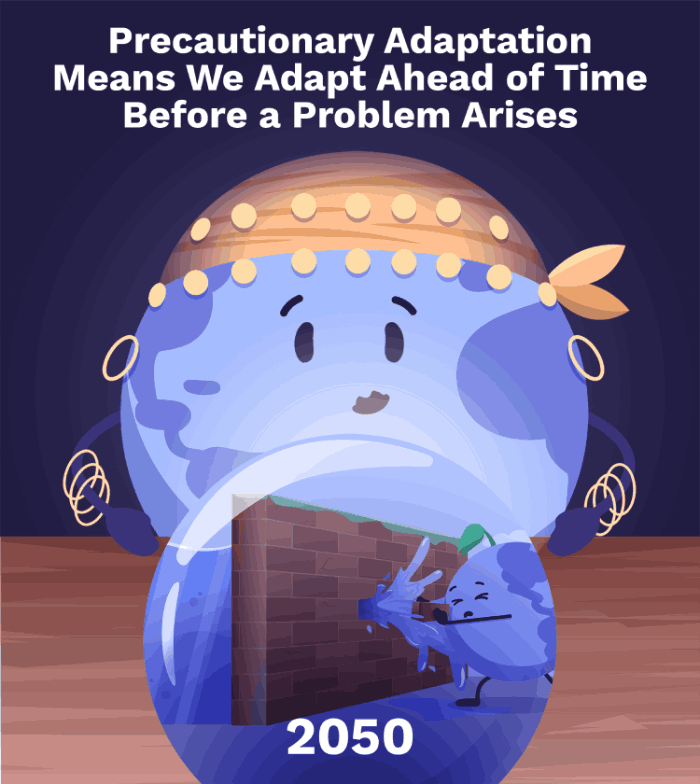
Precautionary Adaptation
- “No-” or “low-regret” adaptations are solutions that create immediate benefits
. Examples of low-regret options include collecting rainwater
or not building in areas of high flood risk
(which sounds obvious but it still happens!
).
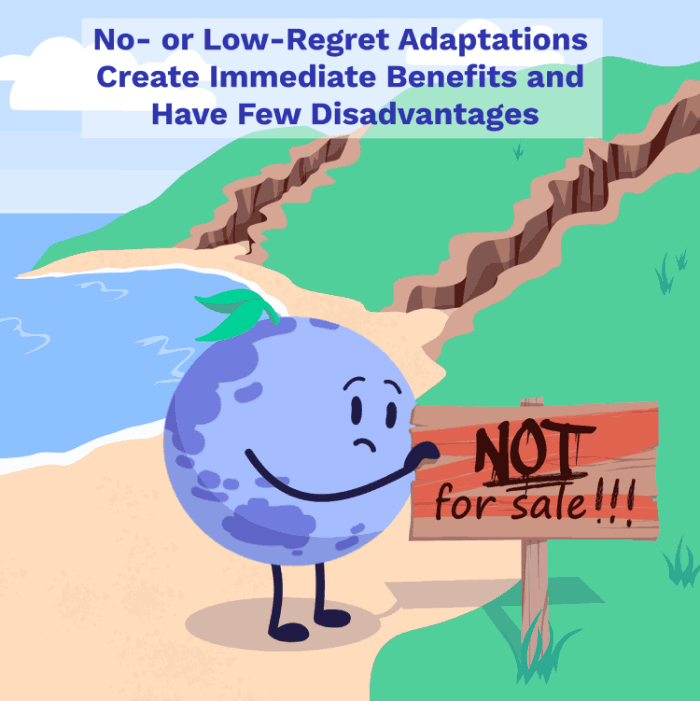
No/Low-Regret Adaptation
What will it cost?
Good question - the World Bank estimates that adapting to 2°C of warming will cost $70-100 billion USD per year between 2010-2050 . However, the costs and benefits will vary by location and also by how much we choose to invest in the first place
.
One thing researchers tend to agree on is that the cheapest way to adapt is to start doing it now . This is because as the climate changes, the cost of adaptation increases
and we start to lose options
, incurring ever-larger costs in damages
. These costs of climate change damage which we cannot adapt to are called ‘residual damages’
.
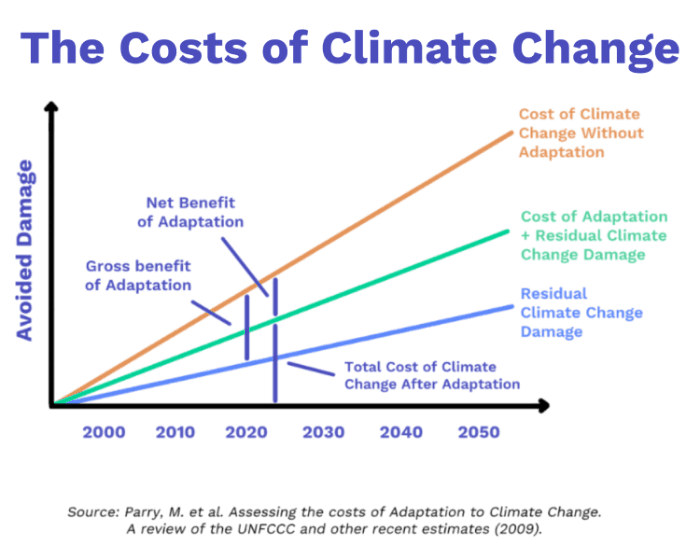
How to deal with the costs of climate change
With increasing pressure to adapt, however, nearly half of the world’s largest businesses agree that adaptation solutions could create an extra $236 billion USD profit in the short to medium term . This in turn, could create all sorts of knock-on opportunities.
Can every country afford to adapt?
Every country will need to adapt. Yet despite the global threat, many countries who can afford to adapt still haven’t set measurable adaptation targets via national laws and policies .
Existing economic inequalities mean that some countries won’t be able to afford to adapt as much as others . While wealthy countries are the primary contributors to climate change
, it is the poorest countries that will feel the effects most severely
. What’s more, these wealthier countries can afford to put money into tackling and adapting to these problems, while developing countries often lack the resources they need to adapt effectively
. This creates an adaptation gap between low- and high-income countries. This remains a deeply unfair problem
which is likely to worsen between 2030-2050
.
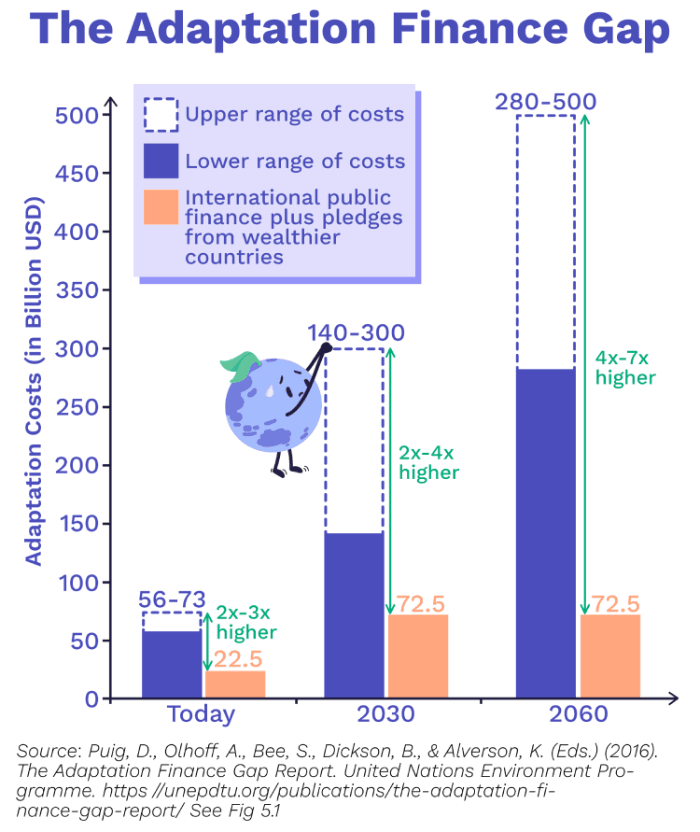
The Adaptation Finance Gap
How do we deal with the adaptation gap?
Crucially, we need to recognise that climate change adaptation should be linked to fair and sustainable development across the globe . This means working to help the populations who are most vulnerable to climate change and finding ways to more efficiently fund adaptation in these places
.
What areas of society need to adapt?
Adaptation will be vital for building better societies now and in the future . We need to adapt every sector of our society - from how we get our food and water, to keeping everyone healthy and providing safe shelter.
First up, let’s explore how to adapt the way we produce food on our changing planet.
Next Chapter